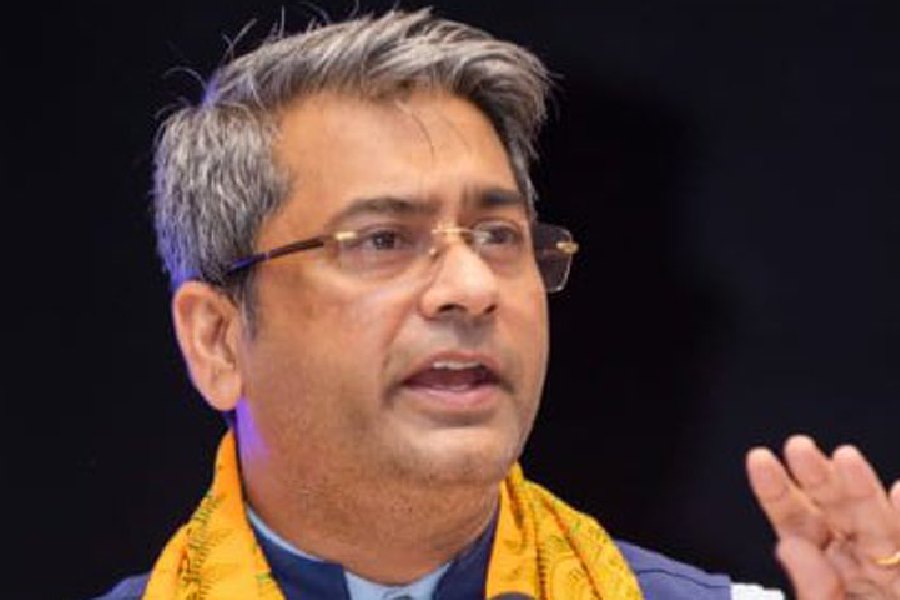There is general agreement, around the world and in India, that “Naatu Naatu’s” (imaginatively marketed) triumph at the Oscars — it won the coveted golden statuette in the ‘Best Original Song’ category — is a testament to the Academy of Motion Picture Arts and Sciences doffing its proverbial hat to the principle of representativeness. India’s tryst with the Academy Awards has, of course, been older and, arguably, more cerebral. But one cannot expect impressionable men and women, busy gyrating — literally or otherwise — to the seemingly contagious rhythm of “Naatu Naatu” to remember such trivialities. But the collective enchantment with “Naatu Naatu’s” incomprehensible twists and turns has also resulted in the good people with twinkling feet missing out on a glaring act of omission: even after ninety-five years of existence, the Academy is yet to honour the men and women who make up Hollywood’s constituency of stunt performers. Surely the shadowy and laboured existence of this fraternity cannot be proof of Hollywood’s mythical inclusivity?
Of course, the world’s most influential English film industry is not the only entity that can be charged with meting out step-motherly treatment towards stuntmen and women. Bollywood is a close cousin of Hollywood in this respect. The Filmfare Awards — the desi version of the Oscars — reportedly does not bestow official recognition on stuntmen and women. In 2016, goaded by a letter from the actor, Akshay Kumar, the Zee Cine Awards introduced ‘The Stunt Person of the Year Award’. In the West, the Screen Actors Guild as well as the Academy of Canadian Cinema & Television have been equally charitable. Unfortunately, this kind of acknowledgement, in spite of its importance, cannot really match the significance and prestige associated with an Oscar or a badge of honour from BAFTA, both of which remain elusive for stunt artists. Interestingly, Hollywood has honoured some stuntmen — occasionally. The magazine, Vulture, noted in a piece that Yakima Canutt — the man behind John Wayne’s superlative antics — was given an honorary Oscar in 1967; Hal Needham — he was the man who pulled Burt Reynold’s punches on screen and also shared the actor’s home — won not one but two awards. Yet, an annual category to appraise and reward stunt artistry continues to be resisted by those who lay out the red carpet in Hollywood.
This is not to suggest that this inertia — unwillingness — to honour the men and women who risk their lives — The Guardian reported 40 deaths of stuntmen between 1980 and 1990 in America alone — in cinema’s equivalent of the tour of duty has not been challenged from within Hollywood. Evocative tributes have come from Quentin Tarantino: Death Proof (2007) and, more relevant to this discussion, Once Upon a Time in Hollywood (2019) had forced the audience’s gaze towards the double lives of these artists where enigma co-exists — nay, overshadows — neglect. There was a time of whispers that the stuntman’s banishment to obscurity was the Establishment’s way of ensuring that the sheen on the actor — the beneficiary of the daredevilry of stuntmen — remained undimmed. But many contemporary actors, Vulture argues, have made it a point to publicly talk about how stuntmen have contributed to cementing their fame. Hollywood A-listers, such as Brad Pitt, Keanu Reeves and Tom Holland, are among these benevolent souls.
And what about stuntwomen? Why isn’t there much on them, even from magnanimous superstars?
Stuntwomen: The Untold Hollywood Story, a revealing documentary directed by April Wright, strives to answer this question. Employing a singular narrative technique of pairing the old and the new generations of stuntwomen — Kylie Northover has written about the documentary in the Sydney Morning Herald — Stuntwomen lays bare a world of performative arts that is marked by immobility and transition, both of which have been inimical to the cause of stuntwomen. Racism and sexism have remained all-pervasive; the only change, though, has been the shrinking of the turf for these women artists. Wright’s documentary suggests that in its early years, at least till the 1920s, Hollywood employed an equal number of stuntmen and women. Most of the latter, trained as dancers and actors, thought nothing of hanging from buildings or diving into freezing waters. But with the rise of the industry’s popularity and — this is telling — profitability, women were elbowed out. By the 1930s, men, in wigs and women’s costume, had taken over the jobs of stuntwomen. The 1960s, which coincided with the civil rights and feminist movements, improved matters but not for all women — coloured artists continued to be deprived.
At times, the obscurity of stuntmen has been justified with some novel explanations. One line of thinking alleges that stuntmen are complicit in Hollywood’s fetishisation of violence and toxic heroism and deserve their place in the twilight realm. The roots of their obfuscation are, however, deeper and more complex. The enduring invisibility of stunt performers exposes a peculiar, evolving tension among art production, the collective sense of aesthetics and the prevailing class sensibility. For instance, the great painters, it can be argued, are also the finest of stuntmen, not only because of the magic tricks they played on canvas but also because the manual production of their kind of art was a herculean physical feat, the kind performed, albeit differently, by cinema’s stuntmen. These great artists and their art have survived and been accorded the highest honours. But in cinema, the lengthening shadow of mechanisation and, eventually, automation — be it the special effects of yore (for which there is an Oscar) or modern VFX — which are now integral to cinematic productions, appear to have introduced an element of social condescension for human labour and, in effect, for class. Unionisation — unions exist in film industries in the United States of America and in India — may have led to improvement in pay scales, insurance coverage and protective gear but collective — public — cognisance, something that is craved by the artist, remains distant for stunt performers. This eclipsing of labour by glamour is not limited to stuntmen.
The luminescence of the cinestars could well be borrowed light reflected by the toil of the anonymous, unheralded spot-boys, clappers, set-carpenters, lightmen, editors, cameramen, refreshment suppliers, among others, whose combined, synchronised artistry cannot be captured by the all-too-fleeting film credits.
uddalak.mukherjee@abp.in











